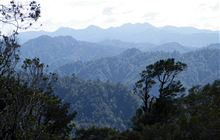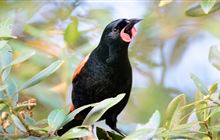Impact of pests in Raukumara Forest Park
Archived content: This media release was accurate on the date of publication.
Introduction
DOC is reviewing options to address the impact of pests within the Raukumara Forest Park.Date: 11 January 2018
In a November survey of the understory in the Raukumara Forest Park, DOC's East Coast Biodiversity Ranger Graeme Atkins said he struggled to find any totāra that were alive.
"We got to 200 (dead totāra) and stopped counting – it just got too depressing," says Mr Atkins.
DOC has been undertaking survey work in the Raukumara Forest Park for a number of years. Based on the data collected we can link changes to the forest to introduced deer and possums.
The Department currently spends over $250,000 a year controlling red deer and goats within the Raukumara Forest Park. Currently there is no possum control undertaken by the Department. The forest park is open to anyone wishing to trap possums for the commercial recovery of fur and skins.
The last large-scale possum control operation in the Raukumara Forest Park occurred 20 years ago and involved aerial application of 1080 pesticide.
The Raukumara Forest Park holds significance for iwi on both the west and east sides of the range. DOC is working towards a co-ordinated approach regarding its management.
"We know that where we undertake pest control we get positive results," says Operations Manager John Lucas.
"Different types of pest control are suited to different areas and we need to do some further work and consultation to determine what's the best action for the Raukumara Forest Park."
Contact
John Lucas, Operations Manager, Gisborne
Mobile: +64 27 295 7395


